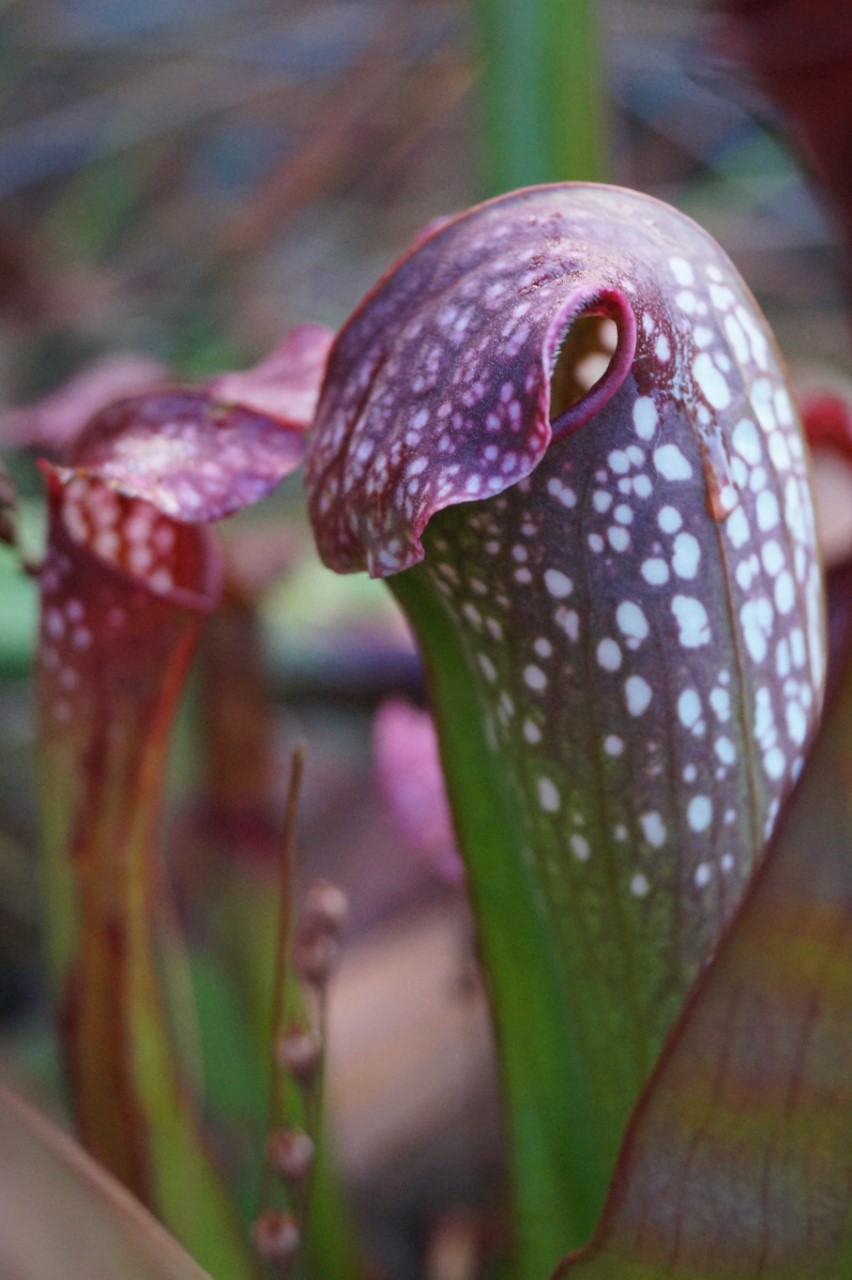Sarracenia Trumpet pitchers
Sarracenia grow in swamps and boggy soils along the eastern seaboard of the USA. There are many beautiful varieties ranging from squat tub-shape pitchers to tall and elegant trumpets with spectacular colours and patterns. Trumpet-like leaves are designed to lure and intoxicate insects with a sweet nectar and unwary insects falling into the traps nourish the plant.
GROWING MEDIUM: sphagnum peat 60%/horticultural sand 40% (inert and free of minerals) or perlite.
WATER: During the growing season from October to May sit plants in a shallow tray of water at all times. In winter keep soil damp but not wet.
FERTILISER: Plants do not require fertiliser as they acquire all nutrients they need through trapping insects. Although weak liquid fertilizers can be beneficial for small plants if used sparingly.
SUNLIGHT: Plants require bright light to full sun to thrive during the hot months of summer some shade is recommended.
Sarracenia Winter Care
-
Trumpet pitchers should be well and truly dormant by July. Depending on the species or hybrid the trumpets will turn brown although some hold good form in their pitchers through winter. Cut trumpets back to the coloured part or to the rhizome. This allows air and light to reach the rhizome and space for new pitchers to develop at the end of winter. A few shortened leaves can be left if desired.
-
Keep soil moist but DO NOT sit pots in water for long periods – a few days is fine but weeks may result in plants rotting. Do not allow soil to dry out completely! Once new growth appears sit the pot in water again.
-
Plants need their dormancy period so positioning plants outdoors is best for long term survival and health of the plant.
-
It is the ideal time to divide and repot larger plants. Take care not to damage roots or rhizome, and check for pests such as scale or mealy bug.
-
Plants will send up new pitchers and if mature will flower around September, depending on species.

NEW SARRACENIA HYBRIDS
Our Sarracenia hybrids are getting more complex, so much so, the names are too long to fit on the labels.
So, We have given each hybrid a number, listed below.
001. (Leucophylla x Excellens) x (Flava Atropurpurea x Leucophylla “pink pubescent’)
002. Mitchelliana x (Flava Atropurpurea x Leucophylla ‘pink pubescent’ )
003. (Flava Atropurpurea x Leucophylla ‘pink pubescent’ ) x (Mitchelliana x Leucophylla ‘pink pubescent ‘)
004. Flava Ornata x Mitcherlliana
005. Moorei x Leucophylla
006. Umluftiana x (Leucophylla x Umluftiana )
007. ( Flava Atropurpurea x Leucophylla ‘pink pubescent’) x (Mitchelliana x Leucophylla)
008. (Flava Atropurpurea x Leucophylla ‘pink pubescent’) x (Leucophylla x Umluftiana)
009. Mitchelliana x (Leucophylla x Umluftiana )
010. Big white top Moorei x Flava Atropurpurea
011. (Flava Atropurpurea x Leucophylla ‘pink pubescent’) x Umluftiana
012. Leucophylla pink lip x Alata red throat
014 Large xMitchelliana hybrid
015 Moorei x Leucophylla ‘pink pubescent’Your content goes here. Edit or remove this text inline or in the module Content settings. You can also style every aspect of this content in the module Design settings and even apply custom CSS to this text in the module Advanced settings.
